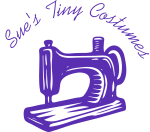Title: Exploring Fabric and Fiber Arts in Doll-Making: A Comprehensive Guide
The artistry involved in doll-making has always been a true testament to the skill and creativity of artisans worldwide. As much a form of expression as it is a mode of play, doll-making is a craft that has evolved alongside human civilization. One of the key aspects of this delightful craft is fabric and fiber arts. This guide delves into the myriad aspects of fabric and fiber arts in doll-making, aiming to give aficionados a deeper understanding of this enchanting domain.
Fabric and fiber art encompasses a wide range of techniques that involve using natural or synthetic materials to create works of art. This art form is inextricably entwined with doll-making, bringing these inanimate objects to life in a fascinating array of colors, textures, and forms.
Traditionally, doll artisans often employed natural fibers like cotton, wool, silk, and linen to construct dolls. The usage of these materials added a touch of authenticity to the dolls, giving each one a unique personality. Modern doll-makers have further expanded their fiber repertoire, introducing synthetic fabrics like nylon, polyester, and rayon into the mix.
Every fabric type has its own specific handling technique and aesthetic outcome. For instance, cotton and silk are renowned for their ease of dye absorption, a characteristic that allows for intense color saturation and resilience against fading. Wool, on the other hand, offers a natural texture and volume to the dolls, making them less prone to fraying.
While fabric is the skin in doll-making, fibers serve as the bones. Fibers are quintessential in doll-making, lending structure and giving shape to the doll's form. The selection of fibers goes hand-in-hand with the choice of fabric, as the nature of the fiber could drastically affect the final outcome of the doll's physique.
The mastery of fabric and fiber arts in doll-making is not merely a mechanical process. It is also a form of storytelling. Every choice an artist makes, from the texture to the color palette, contributes to the narrative that the doll conveys. This journey takes a broad spectrum – from cheerful and animated dolls with bright color schemes and flamboyant fabrics to more somber figurines characterized by muted tones and soft, subtle textures.
One of the avenues doll-makers use to develop their skills in fabric and fiber arts is through workshops and courses. With a vast array of learning platforms available online, enthusiasts can easily learn new techniques, refine existing skills, or even delve into the history and cultural significance of this craft. Another way of improving one’s skills is by joining doll-making communities where experiences, insights, and inspiration are shared among peers.
In conclusion, the role of fabric and fiber arts in doll-making is multifaceted, involving technical knowledge and artistic intuition. As doll-making continues to evolve, so too will the techniques and materials associated with it. Whether you are a seasoned artist or a novice enthusiast, understanding and exploring the fabric and fiber aspects of doll-making will surely enrich your craftwork, providing you with a fresh perspective and potential avenues for creativity.
This guide hopes to inspire a deeper appreciation for the craftsmanship that goes into doll-making, particularly the magic that fabric and fiber arts bring to this timeless art form. So, pick up your sewing kit and let’s bring life to some dolls.
